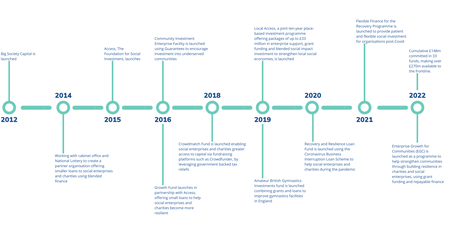Join the community
We want to make blended finance a more accessible tool in investment, so more capital can be used for social and environmental benefit. The Community of Practice is a UK-based network, working across different sectors, within developed and emerging global markets. Set up by Big Society Capital, Access the Foundation for Social Investment and Save the Children, it aims to facilitate learning and foster connections between practitioners. Since inception last year, the community has grown to over 150 practitioners, with an official knowledge hub launching later this year.
Learn more

